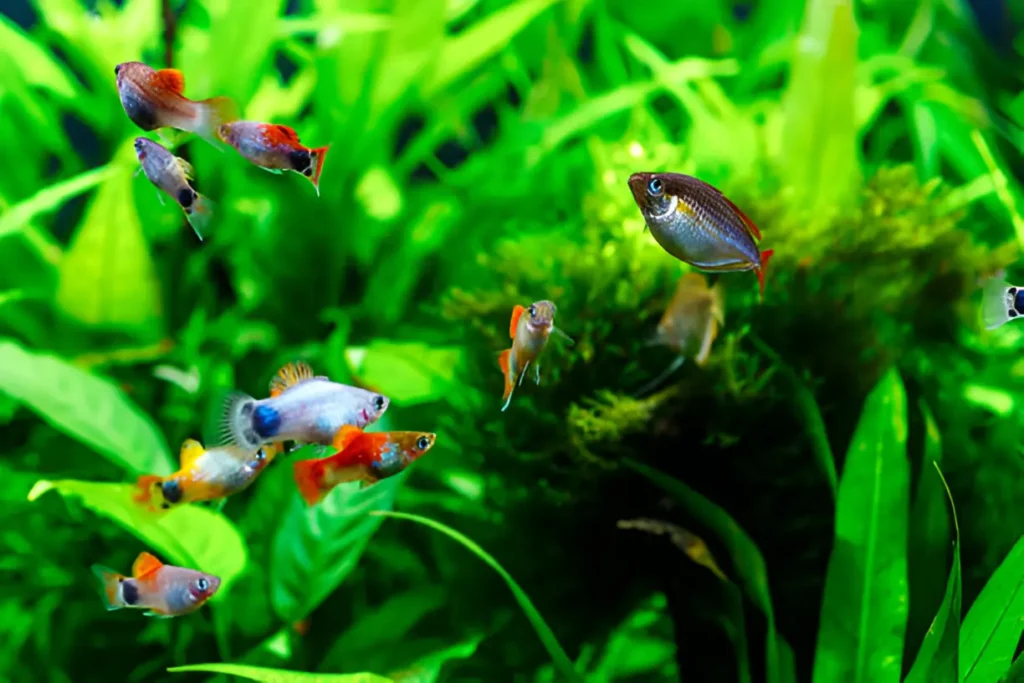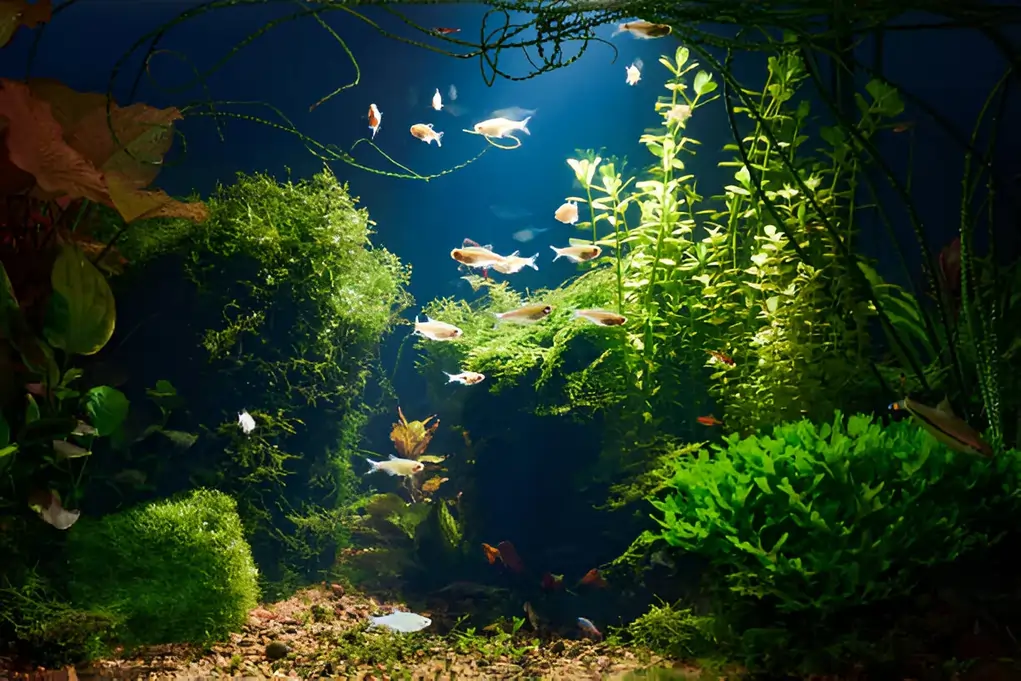Introduction to Nano Fish
Keeping an aquarium is a pleasant activity, and beginning with nano fish is an excellent starting point, especially if you have a tiny living area or are new to fishkeeping. Nano fish are small, bright species that are ideal for compact aquariums, needing little upkeep and making them an excellent choice for beginners.
Nano fish come in a wide range of colors, habits, and traits, adding life and beauty to any small tank without requiring difficult care treatments. These fish enable you to build a modest but dynamic environment in settings as small as 5 or 10 gallons. Whether you prefer freshwater or saltwater aquariums, nano fish are an excellent way to bring a piece of the undersea world into your home.
What Are Nano Fish?
Nano fish are species that remain small even in adulthood, usually measuring no more than 1-2 inches. These small fish are ideal for nano aquariums, or tanks that are 10 gallons or smaller, and provide an excellent opportunity to enjoy a variety of fish without requiring a large amount of room or equipment. Many nanofish are naturally calm and grow in groups, making them an excellent choice for establishing an interesting but manageable aquarium community.
Why Choose Nano Fish for Small Aquariums?
Nano fish provide numerous benefits, making them an excellent choice for both beginners and expert aquarists.
- Space Efficiency: Nano fish require very little space, making them ideal for homes, offices, and other small spaces.
- Easy Maintenance: Smaller tanks allow for easier water changes and require fewer equipment, making aquarium care less feared for beginners.
- Variety and Visual Appeal: Despite their small size, nano fish come in a variety of beautiful colors and shapes that add character and color to any small aquarium.
Key Considerations for Nano Aquariums
While nano fishkeeping is beginner-friendly, there are several important things to consider in order to maintain a healthy habitat.
- Water Quality: Maintaining consistent water conditions is critical because smaller tanks are more vulnerable to temperature and water chemistry changes.
- Space and Decor: Nano fish still require space to swim and find shelter, so choosing plants and decor that match their small size is essential.
- Tank Mates: Some nano fish live alone, while others thrive in tiny groups. Understanding their social requirements might help create a more balanced atmosphere.
Freshwater vs. Saltwater Nano Fish
Nano fish are available in both fresh and saltwater types.
- Freshwater Nano Fish: Beginners choose freshwater nano fish since they are typically easier to care for and less expensive.
- Saltwater nano fish: These are known for their bright colors and distinctive shapes, and while they can be more demanding, they provide a colorful aquarium experience.
Best Nano Fish for Freshwater Tanks
Freshwater nano fish are popular because they are hardy and easy to care for. Here are some top choices:
- Neon Tetra: These little, colorful fish are peaceful and thrive in bunches.
- Betta Fish: Known for their vibrant colors, Betta fish can live independently and thrive in tiny aquariums.
- Celestial Pearl Danio: With bright patterns, they offer color and like schooling in peaceful environments.
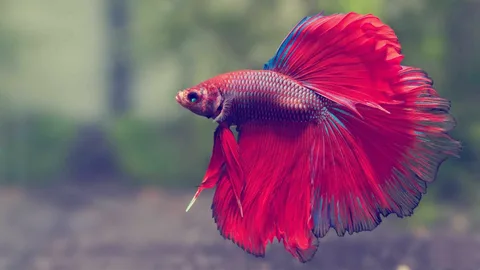
Best Nano Fish for Saltwater Tanks
Saltwater nano fish add a particular brightness to small aquariums, but they demand certain water conditions. Some suitable saltwater nano fish include:
- Clownfish: These popular fish are hardy and may thrive in smaller tanks.
- Royal Gramma: Known for their beautiful purple and yellow colors, these fish are placid and easy to care for.
- Yellowtail Damselfish: A colorful, energetic species ideal for small saltwater aquariums.
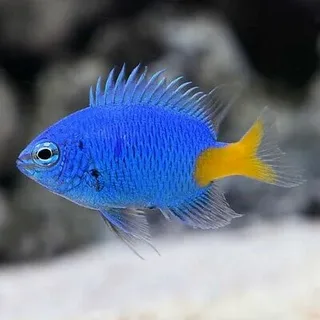
Popular Nano Fish for 5-Gallon Tanks
When space is limited, several nano fish species adapt well to 5-gallon aquariums.
- Betta Fish: A single Betta may thrive in a 5-gallon aquarium with appropriate decor and plants.
- Endler’s Livebearer: Small, hardy, and colorful, they thrive in small places.
- Scarlet Badis: Peaceful and colorful, they are ideal for a 5-gallon setup.
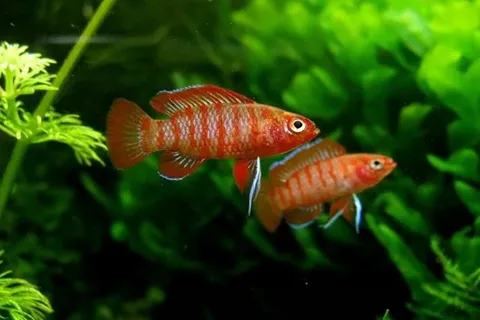
Nano Fish That Can Live Alone
Some nano fish species can live alone, making them perfect for small tanks:
- Betta Fish: Known for their territorial behavior, Bettas are happy on their own.
- Dwarf Gourami: A colorful fish that can live in a tank by itself.
- Pea Puffer: Small and fascinated, these lonely fish can survive in interesting environments.
Creating a Nano Fish Community
To create a peaceful nano fish community, choose species that share similar water parameters. For example, combine calm fish like Neon Tetras with peaceful bottom dwellers like Corydoras. Additionally, adding plants and hiding spots can reduce stress and create a more natural environment for all tank inhabitants.
How Many Nano Fish in a 10-Gallon Tank?
The basic rule is one inch of fish per gallon, but this varies according to fish types and behaviors. In a 10-gallon tank, you may comfortably accommodate a small school of nano fish such as Tetras or Rasboras, as well as a few bottom feeders.
Choosing Nano Fish by Behavior
Each nano fish species has an own personality, thus choosing fish based on behavior will improve your aquarium experience:
- Calm Fish: These species are peaceful and friendly, making them ideal for low-stress aquariums.
- Active Fish: Species such as Zebra Danios are lively, always swimming and exploring.
- Tetras and Rasboras: These enjoy schooling and flourish in tanks with other members of their species.
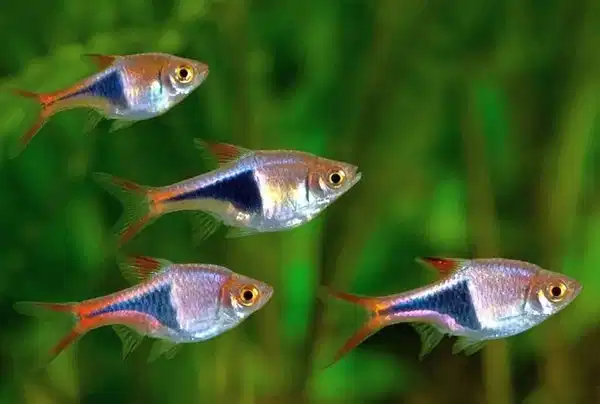
Smallest Nano Fish Species
If you are looking for the smallest nano fish, consider these small wonders:
- Phoenix Rasbora: A lovely species that rarely grows larger than an inch.
- Dwarf Pygmy Corydoras: These bottom-dwelling fish measure less than an inch and like exploring.
- Celestial Pearl Danio: Known for their small size and shining colors, they make an excellent addition to nano tanks.
Unique and Colorful Nano Fish
Some micro fish create an eye-catching palette in small tanks:
- Chili Rasbora: With its bright red color, it offers a splash of hue to any aquarium.
- Ember Tetra: This species emits a deep orange glow, creating a warm atmosphere.
- Rainbowfish (Dwarf): These fish, known for their multicolored scales, are a beautiful choice.
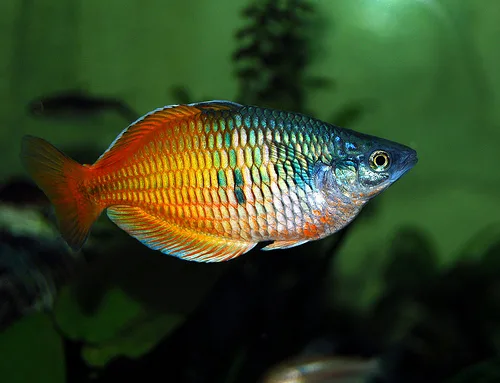
Low-Maintenance Nano Fish
These low-maintenance nano fish are great for beginners and people with a busy lifestyle.
- White Cloud Mountain Minnow: Durable and flexible, these fish flourish in a variety of environments.
- Harlequin Rasbora: Peaceful and easy to care for, they thrive in tiny schools.
- Guppies: These are known for their strength and come in a variety of colors. They thrive in tiny tanks.
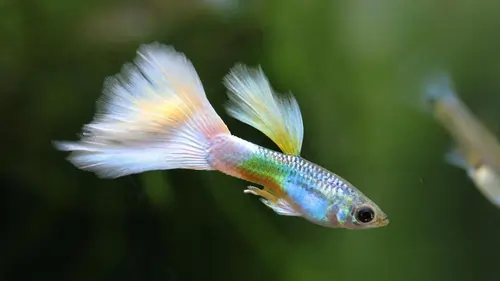
Peaceful Nano Fish for Community Tanks
Some species are very peaceful and live along with other fish:
- Otocinclus Catfish: Known for their algae-eating habits, these non-aggressive fish help keep tanks clean.
- Corydoras: They are little, social, and thrive in groups, adding mild action to any tank.
- Neon Tetras: These fish are calm and community-oriented, making them perfect for small groups.

Nano Fish Tank Setup Essentials
Setting up a nano fish tank requires the following items to establish a stable environment:
- Filter: A compact, quiet filter is ideal for keeping water clean.
- Heater: Maintains a steady temperature, which is vital for tropical nano fish.
- Lighting: LED lights boost plant growth and improve the color of fish.
Planting a Nano Fish Tank
Plants in a nano tank provide natural filtration and cover for fish. Some ideal live aquarium plants are:
- Java Fern: This hardy and easy-to-care-for plant provides cover while also improving water quality.
- Anubias Nana: It is a little plant that thrives in low light, making it excellent for small aquariums.
- Java Moss: Produces a lush, green carpet and requires little maintenance.
Nano Tank Decor Ideas
Decorating a nano tank is more than just about appearance; it is about establishing a warm environment in which nano fish can feel safe and comfortable. The correct design can make nano fish feel more at peace, encourage natural behaviors, and even aid in tank maintenance.
- Natural Hiding Spots: Nano fish are less anxious when they have places to hide. Consider including caves, minor rock structures, and driftwood. Betta fish and other schooling species typically prefer these sheltered areas.
- Aquascaping with Plants: Planting low-maintenance, compact plants such as Java moss, Anubias, or Marimo moss balls gives coverage without taking up a lot of space. It also enhances water quality by absorbing nitrates.
- Sandy Substrate: Many nano fish species, particularly bottom dwellers like Corydoras, like sandy substrates. Fine sand enables them to forage and dig, making them feel more at ease.
- Floating Plants: Small floating plants, such as duckweed or water lettuce, provide natural shade and enhance the tank’s attractiveness while providing a sense of security to nervous fish.
Tips for Maintaining Nano Aquariums
Nano aquariums require routine but manageable maintenance. Here are some tips to keep your tiny tank in good condition:
- Frequent Water Changes: Because nano tanks have limited water volume, even little waste buildup can have an influence on water quality. Weekly water changes of 20-30% help to keep water parameters steady.
- Water quality: It should be monitored on a regular basis, including pH, ammonia, nitrite, and nitrate levels. This is particularly important in micro tanks, where minor changes might cause significant problems.
- Avoid Overfeeding: Overfeeding is a major problem in tiny tanks. Uneaten food can quickly degrade and contaminate water quality. Feed in modest quantities and remove any leftovers.
- Keep the Filter Clean: Because nano tanks have a smaller water volume, filters work harder, hence they must be cleaned more often. To protect good bacteria, rinse filter media with tank water rather than tap water.
Common Nano Fish Diseases
Nano fish are vulnerable to a variety of common infections, particularly in the confined environment of a small aquarium. Being alert and learning how to recognize symptoms can help prevent and cure problems successfully.
- Ich (white spot disease): Ich is a frequent disease in nano fish, characterized by white spots on the body and fins. To speed up the recovery process, use over-the-counter Ich medications and elevate the tank temperature.
- Fin Rot: This bacterial infection can develop when the water quality reduces. Regular water changes and antibacterial drugs can help tackle the problem.
- Velvet: It is a gold or rust-colored dusting that occurs on the skin of betta fish. It can be treated with copper-based drugs and tank lights that are lowered during treatment.
- Prevention Tips: The best approach to avoid infections is to maintain the tank properly, test the water on a regular basis, and avoid overcrowding. Always quarantine new fish to prevent illness transmission in the communal tank.
Feeding Nano Fish
Feeding nano fish appropriately keeps them healthy and alive. Most nano fish need a range of meals to suit their nutritional requirements.
- Small Pellets or Flakes: Many nano fish thrive on high-quality nano pellets or flakes made specifically for small fish.
- Frozen Foods: Nano fish prefer frozen and live foods such as bloodworms, brine shrimp, and daphnia. Offering live or frozen items on occasion encourages natural hunting habits while also providing necessary nutrients.
- Feeding Frequency: little fish should be fed once or twice a day in little quantities. Remove uneaten food to maintain water purity.
Caring for Fry in a Nano Tank
If your nano fish breed in the tank, you may end up with fry who require particular care.
- Separate Tank: Transferring the fry to a separate tank can improve their survival rate. A tiny, bare-bottomed tank equipped with a sponge filter is suitable.
- Fry-specific foods: Fry requires extremely minute food particles. Begin with infusoria or liquid fry food, then ultimately advance to baby brine shrimp as they grow.
- Water Changes: Fry are sensitive to water fluctuations, therefore keeping perfect water quality is vital. Make frequent, moderate water changes.
Seasonal Care Tips
Seasonal changes can have an impact on the temperature and lighting in your home, including your nano fish tank.
- Summer Tip: In hot weather, nano tanks can quickly overheat. Place your tank in a shaded area or use a fan to cool the water. Avoid positioning the tank near windows, science direct sunshine might promote overheating.
- Winter Tips: During the colder months, ensure that your heater is working properly to keep the water temperature stable. Avoid drafts, as they might cause changes in tank temperature.
Conclusion
Creating a nano aquarium is a pleasing and attractive method to bring nature into your house that doesn’t require a large tank or complex technology. Nano fish, with their manageable size, provide an easy introduction to fishkeeping while allowing experienced aquarists to experiment with creative aquascaping and different species. From the placid schooling behaviors of Tetras to the vivid colors of Betta fish, small tanks provide endless choices for anyone seeking to create a peaceful aquatic environment in a small space.
